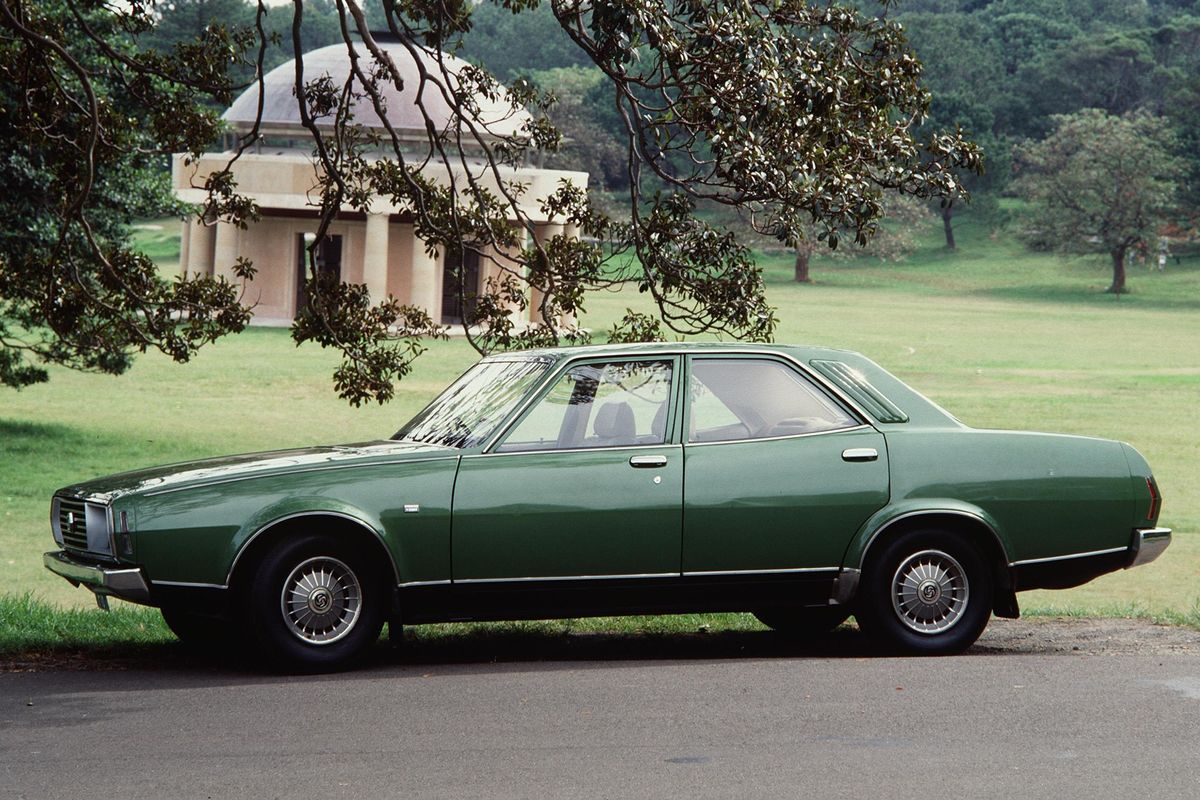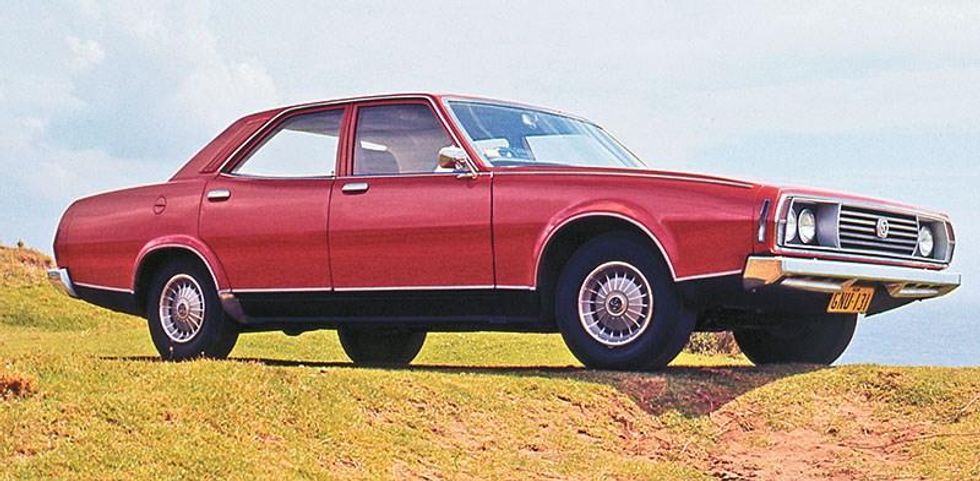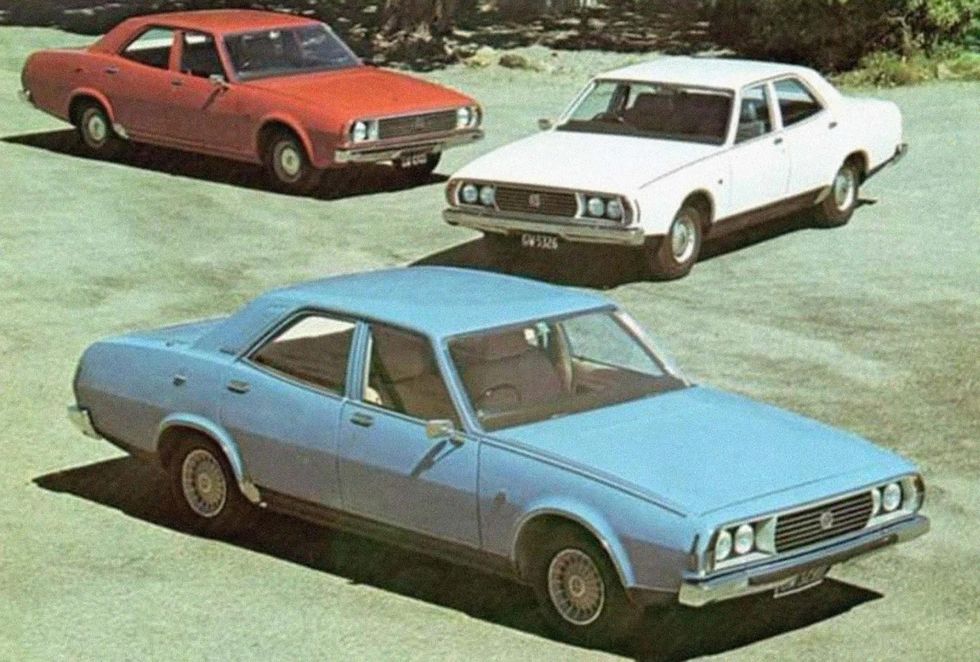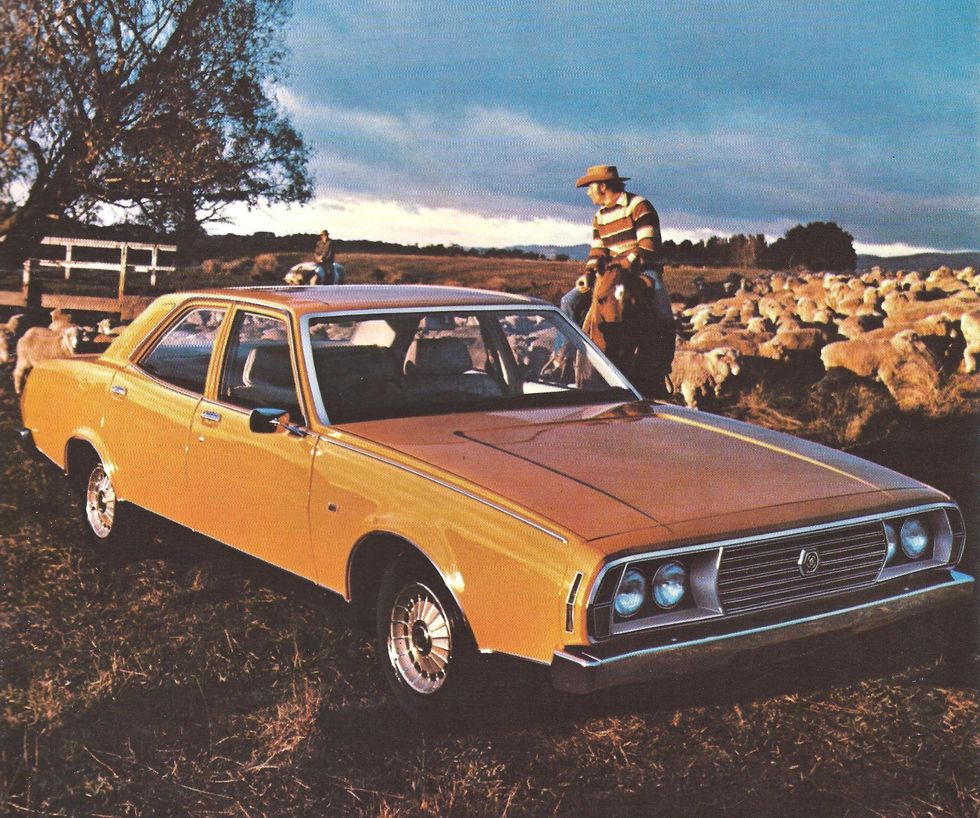The Leyland P76 Was Destined for Success. Then It Became Australia's Edsel
So What Went Wrong?
01/18/2023

Photo courtesy Powerhouse Collection, New South Wales Museum of Applies Arts and Sciences
ClassicsSo What Went Wrong?

There may have been a place for another full-size car in the Australian market during the Seventies. There may have been an appetite for an advanced competitor to the Ford Falcons, Holden Kingswoods, and Chrysler Valiants, especially if it proved more economical and better built. There may have been a place for the Leyland P76 when it was introduced 50 years ago, had things not gone awfully wrong for the car that has since become the butt of many an Australian automotive enthusiast's joke.
Before the 1968 merger of Leyland Motors and British Motor Holdings that formed British Leyland, BMC's Australian arm did a brisk business selling the Mini and a range of other economical cars. Despite the success of the lineup, limited parts sharing among BMCA's cars hurt profitability, so David Beech and his colleagues at BMC's Australian arm formed a plan to design and build two cars by and for the Australian market: a mid-size car to be released in 1973 and a full-size family car a year later.
Beech, however, was taken aback by the merger and the swift decision to greenlight the Marina, a car that fit neatly into his team's plans for the mid-size car. Those plans, however, allowed the team to focus all of their resources on the full-size car. Those resources weren't vast, however: His initial request for a AU$30 million budget got whittled down to AU$21 million, which was to cover both development of the car and refurbishment of an existing assembly line in the company's Zetland factory previously used for building small cars. Internally designated YDO26 (for a sedan version) and YDO27 (for a coupe version), the full-size car was given the nod by British Leyland in England in late 1968.

While many stories about the P76 simply note that the car's styling came from Giovanni Michelotti, Michelotti's involvement was actually limited, according to Dave Carey's history of the P76 for Street Machine magazine. Beech did visit Michelotti in Turin hoping to get the famed designer on board with the project, but his decision to do so without consulting Romand Rodbergh, the chief stylist for BMCA, didn't sit well with Rodbergh. Granted, Rodbergh and his team had only tweaked existing designs and never taken on a full from-scratch design project before, but the decision bothered him so much he spent his holidays working on styling proposals that he sent straight to Donald Stokes, the head of British Leyland in England.
Rodbergh's design famously incorporated a capacious trunk—large enough for a full 44-gallon drum—which, combined with an angular and horizontal grille, gave it something of a wedge design, which was just then becoming vogue among car designers. (Yes, Max was able to fit two big ol' drums in the boot of his Interceptor, but those were different circumstances.) His design also beat out not only the styling proposals submitted by Michelotti, but also those submitted by Karmann and British Leyland's studios in Longbridge, though as Carey noted, the marketing department still wanted Michelotti's name attached to the design, so Beech had the latter "finesse" Rodbergh's design.
How much of the engineering of the P76 took place in Australia, on the other hand, isn't as clear. Carey notes that Leyland engineers, without the luxury of a private proving grounds, bought a small fleet of Holdens to which they progressively added more P76 components over the next two and a half years. However, Keith Adams of AROnline notes that the limited budget meant relying on existing British Leyland work. "There was no way that this was going to be a clean-sheet design at this funding level and much existing Rover-Triumph hardware would need to be incorporated in order to make the P76 programme pay for itself," Adams wrote. In fact, Adams has suggested that the P76 could have been derived from the stillborn Rover P8, an attempt to build a V-8 luxury sedan that came too close to the Jaguar XJ6.

Whatever the case, the P76 emerged with a 4.4-liter version of the 3.5-liter Rover V-8 (itself a derivative of the all-aluminum Buick 215 used in the early 1960s) good for 200 horsepower and 280 pound-feet of torque, a Borg-Warner automatic transmission, standard front disc brakes, MacPherson strut suspension, and the 111-inch wheelbase considered standard for full-size Australian cars. British Leyland reportedly offered to purchase straight-six engines from the other Australian car manufacturers, but with a short engine bay designed around the V-8, the company found that only its E-series overhead-camshaft six-cylinder from the Austin/Morris 2200, with some minor revisions and a displacement increase to 2.6 liters, would fit.
The P76 sedan bowed in 1973 to quick acclaim. Leyland Australia noted that it had Australian size and European sensibilities. Australian magazine Wheels declared it the car of the year. It received high marks for its handling and for the V-8 engine. One even won the Targa Florio stage in the 1974 World Cup Rally. For a moment, it looked like the Leyland P76 would establish British Leyland as a serious contender in the full-size Australian car market. The company laid plans for a 3.3-liter V-6 derivative of the V-8 engine and for a full line-up of variants, including a ute, a station wagon, and a coupe. The coupe, a hatchback called the Force 7V, actually made it to limited production before plans for it were scuttled. Leyland fully intended the P76 to carry the Australian division through the Seventies and for it to eventually make its way to England.

So what went wrong with the Leyland P76? To begin with, it debuted at a time of rising inflation that tanked car sales across the board in Australia. As Carey noted, Holden sales were down 11 percent and Ford sales were down 7 percent. It wouldn't have been a good year for any carmaker to introduce a new model. Add in the 1973 oil crisis, which hit not long after the car's introduction, and suddenly full-size V-8 cars became a harder sell.
It also turned out that Beech and his staff had rushed the P76 into production. Carey rattled off a list of common defects, including windshield and door sill seals, dashboards that distorted in the sun, shifter handles that fell off in the driver's hand, an inadequately sized air-conditioning compressor, and poorly fitting trim and body panels. Leyland Australia put in requests to England for design changes to handle the defects, but British Leyland penny-pinchers reportedly determined it would cost less to handle warranty claims than to make the design changes, so "with scant room on the factory floor and no money to fix the production line, Leyland Australia set up the Rectification Centre, a two-million-dollar facility with 60 highly trained staff tasked with making the cars fit for sale," Carey wrote. "Once established, almost every completed car went through the centre for repair work."

One of those jokes: Why should Leyland have called it the P38 instead? Because it was half the car it should have been.
Maybe the timing was off, and maybe Leyland Australia could have ironed out the P76's production woes. But what really sealed the P76's fate was the parent company's woes. Corporate mismanagement and poor sales put the company far into debt, leading executives to shutter factories in Spain, Italy, South Africa, and Australia. The Zetland factory produced its last car in November 1974, not two years after the P76's introduction. Just 18,007 P76s were built.
That's not to say that there's no enthusiasm for the P76 in Australia. The remaining Force 7V coupes are well documented and highly sought after, Gerry Crown's P76 won the Classic category in the 2013 and 2016 Peking to Paris rallies, and an active P76 owners club in Australia keeps tabs on the parts and knowledge necessary to maintain the cars.
Toyota is pulling out all the stops to compete with the likes of affordable sports cars like the Mazda Miata. The automaker reportedly plans to put the S-FR concept car, originally debuted in 2015, into production. With potential release dates slated for early-2026 or early-2027, perhaps Miata may not always be the answer.
A new report out of Japan confirmed that the Toyota S-FR concept, first seen at the 2015 Tokyo Motor Show, will hit the market to challenge the entry-level sports car segment. Forbes backs up this claim via its print edition of Best Car. According to the report, the Toyota S-FR will be produced in partnership with Daihatsu, a wholly owned subsidiary of Toyota, and Suzuki, of which the Toyota Motor Corporation owns 4.94 percent.
From the sounds of it, the S-FR will share a platform with the Daihatsu Vision Copen that was revealed at the 2023 Tokyo Mobility Show. It will supposedly feature the same two-plus-two seating as displayed in the concept, but will be even smaller and lighter than the Toyota 86 model.
The Toyota S-FR will reportedly get its power from a turbocharged three-cylinder engine that will send around 150 horsepower to the rear wheels. If these figures sound familiar, you may have also heard the rumors about Toyota reviving the Starlet with a GR performance version that has similar specs; a 1.3-liter engine producing 150 horsepower.
Like most concept cars, the S-FR’s design will see some changes before production, in this case reports point specifically to a smaller grille and altered headlights. Whether or not the production model will incorporate the concept’s aero elements is unknown.
Toyota’s target MSRP of $22,700 for the S-FR could potentially beat out the Mazda Miata by around $6,000. Whether or not the S-FR will be sold in the States to potentially compete with Toyota’s existing GR86 model’s sales is also, sadly, unknown, but we have our fingers crossed.
JDM fans rejoice: A recent report out of Japan states that Toyota could be adding to its GR lineup with a front-wheel drive Toyota Starlet hatchback. The reborn Toyota Starlet will reportedly join the ranks of the existing GR Supra, GR 86, GR Yaris, and GR Corolla models.
Built in partnership with Gazoo Racing, Toyota’s motorsport division, the new Starlet will reportedly be built as a rally-focused machine, which makes sense when you consider Toyota’s history in the Rally 4 class. The terrain-dominating Starlet hatchback would compete against Toyota’s rally rivals, such as the Ford Fiesta, Renault Clio, and Peugeot 208.
This information comes from the Japanese car information magazine Best Car. Of course, the production Starlet GR wouldn’t have the rally car’s wide fenders and aggressive aerodynamics, but both versions would likely be powered by a 1.6-liter or 1.3-liter turbocharged three-cylinder engine. It’s our hope that it would be offered with the choice of a six-speed manual transmission or an eight-speed automatic, which would send around 150 horsepower to the front wheels. The subcompact hatch will supposedly weigh in at a mere 2,160 pounds, 727 pounds lighter than a Yaris GR.
The new Toyota Starlet could reportedly fetch between 2.5 million yen and 2.8 million yen, around $16,000 and $18,000, respectively, but if it does go into production, don’t expect to see the model hit the U.S. market anytime soon.